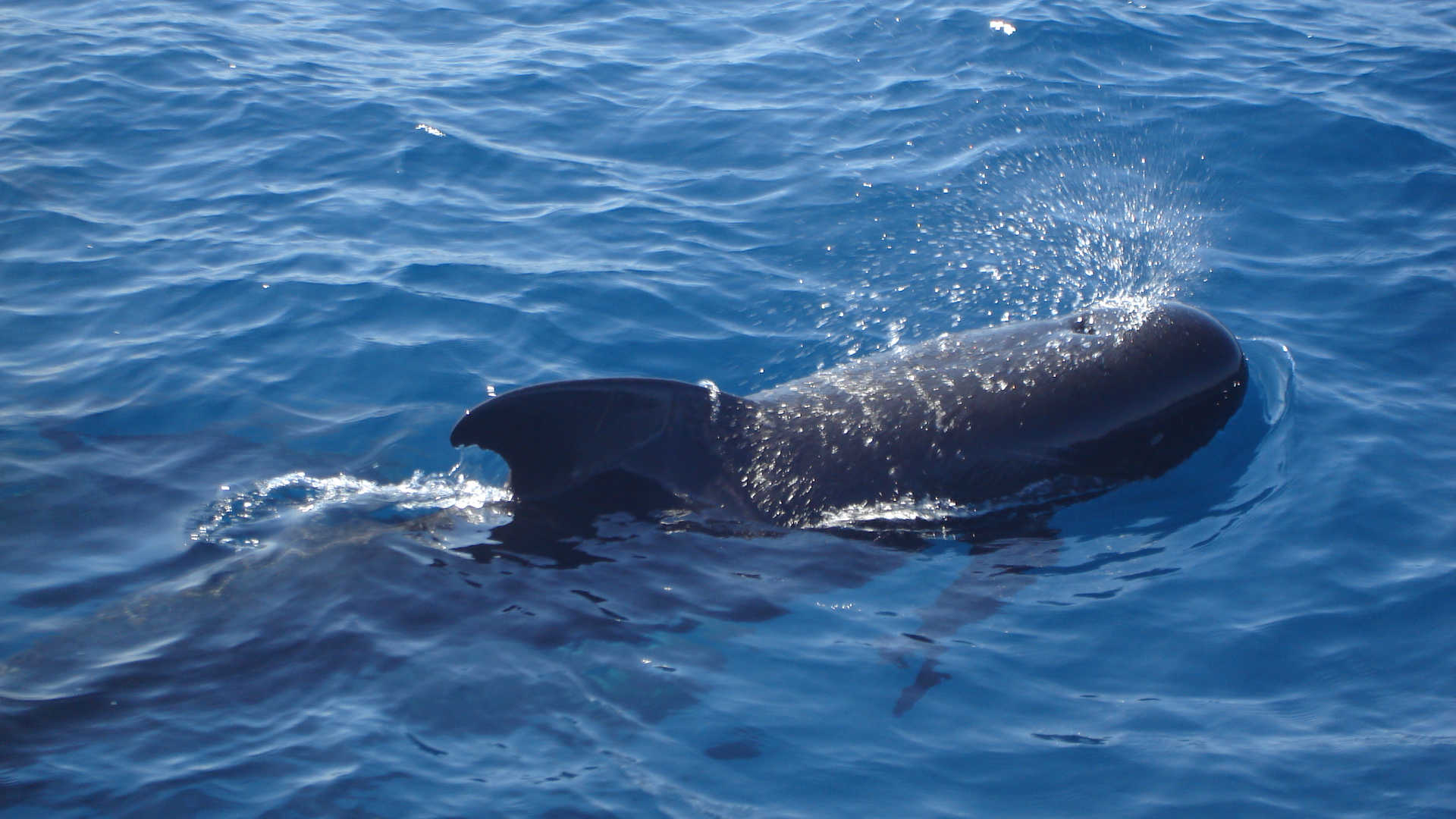
Long-finned pilot whale
The long-finned pilot whale is not actually a whale at all. Instead it is a large species of oceanic dolphin. It shares the genus Globicephala with the short-finned pilot whale (as you will see on the whale and dolphin page). Long-finned pilot whales are known as such because they have unusually long pectoral fins. Pilot whales get their name from the original belief that there was a “pilot” or lead individual in their groups. The name for the genus, Globicephala is derived from a combination of Latin (“globe”) and Greek kephale (“head”). The specific name is Greek for “black”. This species has also earned the nickname of “pothead whale” in some places because the shape of its head reminded early whalers of black cooking pots.
There is sexual dimorphism in the species. Females grow to a maximum length of up to 6m (20ft), and a maximum weight of up to 2,500kg (5,500lb). Males are significantly larger at up to 7.6 m (25ft) in length, and weigh up to 4,500kg (9,900lb). This makes the long-finned pilot whale the second largest member of the dolphin family, behind the Killer whale (Orcinus Orca).The long-finned pilot whale is top of the list of animals by number of neurons more neocortical neurons than any mammal studied to date, in fact having almost twice as many as humans.
While they can bee seen in groups of several thousand, they are generally an amalgamation of a number of smaller groups. Generally they belong to pods that lie in size from 20-150, with individual family groups of 8-10 adding together to make this group.
They make a variety of noises, as well as using echolocation in water too murky to use their eyes. In deep dives, the females on either end appear to make the decisions.
They are Considered least concern, with a north atlantic population of around 780,000 though this includes short-finned pilots whales as it is hard to tell them apart.
Below, you will find a video of these animals. Below that, you will find any articles on this subject that have been written or will be. Below that, I will add any links that will allow you to see this species in the wild.